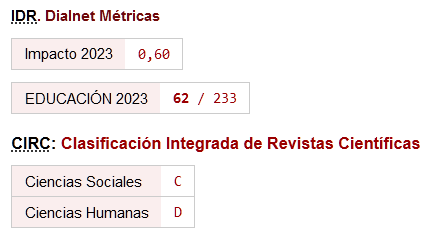An analysis of the Technology Acceptance Model TAM in understanding Faculty’s behavioral intention to use Internet of Things IOT
DOI:
https://doi.org/10.46661/ijeri.7461Keywords:
TAM Model, Self-efficacy, Using the Internet of ThingsAbstract
The study focuses on examining faculty members’ self-efficacy in two departments – Instructional Technology and Computer Science – in using the Internet of Things (IoT) in Saudi universities. To achieve the study’s goal, the Technology Acceptance Model (TAM) was used to test the effect of self-efficacy in the use of the IoT in education. TAM includes the following variables: Faculty Members’ Self-efficacy (FMSE), Perceived Usefulness (PU), Perceived Ease of Use (PEOU), Attitude (AT), and Behavioral Intention to Use IoT (BI). The study consists of quantitative research, and the instrument used was a survey developed to measure faculty members’ self-efficacy. The results showed that faculty members who have more confidence in their technology skills are more likely to view IoT technology as beneficial. Perceived ease of use affected both perceived usefulness and attitude toward adopting the IoT. However, perceived usefulness failed to affect attitude, and attitude does not influence behavioral intention to adopt IoT technology.
Downloads
References
Abdullah, F., Ward, R., & Ahmed, E. (2016). Investigating the influence of the most commonly used external variables of TAM on students’ Perceived Ease of Use (PEOU) and Perceived Usefulness (PU) of e-portfolios. Computers in human behavior, 63, 75-90. https://doi.org/10.1016/j.chb.2016.05.014
Al-Abdullatif, A. M., Al-Dokhny, A. A., & Drwish, A. M. (2022). Critical Factors Influencing Pre-Service Teachers' Use of the Internet of Things (IoT) in Classrooms. International Journal of Interactive Mobile Technologies, 16(4). https://doi.org/10.3991/ijim.v16i04.27007
Alaloni, S. (2021). Employing the Internet of Things in Saudi Universities from the Viewpoint of Faculty Members: Opportunities and Challenges. Journal of Education, Sohaj University, 93. https://doi.org/10.21608/edusohag.2022.212347
Elijah, O., Rahman, T. A., Orikumhi, I., Leow, C. Y., & Hindia, M. N. (2018). An overview of Internet of Things (IoT) and data analytics in agriculture: Benefits and challenges. IEEE Internet of things Journal, 5(5), 3758-3773. https://doi.org/10.1109/JIOT.2018.2844296
Fathema, N., Shannon, D., & Ross, M. (2015). Expanding the Technology Acceptance Model (TAM) to examine faculty use of Learning Management Systems (LMSs) in higher education institutions. Journal of Online Learning & Teaching, 11(2). https://www.researchgate.net/publication/281842180_Expanding_The_Technology_Acceptance_Model_TAM_to_Examine_Faculty_Use_of_Learning_Management_Systems_LMSs_In_Higher_Education_Institutions#fullTextFileContent
Hair Jr, J. F., Hult, G. T. M., Ringle, C. M., Sarstedt, M., Danks, N. P., & Ray, S. (2021). Partial least squares structural equation modeling (PLS-SEM) using R: A workbook. https://doi.org/10.1007/978-3-030-80519-7
Henseler, J., Ringle, C. M., & Sarstedt, M. (2015). A new criterion for assessing discriminant validity in variance-based structural equation modeling. Journal of the academy of marketing science, 43(1), 115-135. https://link.springer.com/article/10.1007/s11747-014-0403-8.
https://doi.org/10.1007/s11747-014-0403-8
Holden, H., & Rada, R. (2011). Understanding the influence of perceived usability and technology self-efficacy on teachers’ technology acceptance. Journal of Research on Technology in Education, 43(4), 343-367. https://doi.org/10.1080/15391523.2011.10782576
Huda, I., & Yulisman, H. (2020). Mathematics, Science and Social Science teachers’ acceptance of online teacher professional development: Does internet accessibility matter?. Journal of Physics: Conference Series, 1460,1, 343-367. https://doi.org/10.1080/15391523.2011.10782576
Hustad, E., & Arntzen, A. A. B. (2013). Facilitating teaching and learning capabilities in social learning management systems: Challenges, issues, and implications for design. Journal of Integrated Design and Process Science, 17(1), 17-35. https://doi.org/10.3233/jid-2013-0003
Isaac, O., Abdullah, Z., Ramayah, T., & Mutahar, A. M. (2017). Internet usage within government institutions in Yemen: An extended technology acceptance model (TAM) with internet self-efficacy and performance impact. Science International, 29(4), 737-747. https://www.researchgate.net/publication/318866085_Internet_Usage_within_Government_Institutions_in_Yemen_An_Extended_Technology_Acceptance_Model_TAM_with_Internet_Self-Efficacy_and_Performance_Impact#fullTextFileContent
Jaafreh, A. B. (2018). The effect factors in the adoption of Internet of Things (IoT) technology in the SME in KSA: An empirical study. International Review of Management and Business Research, 7(1), 135-148. https://doi.org/10.30543/7-1(2018)-13
Joo, Y. J., Park, S., & Lim, E. (2018). Factors influencing preservice teachers’ intention to use technology: TPACK, teacher self-efficacy, and technology acceptance model. Journal of Educational Technology & Society, 21(3), 48-59.
Kim, H., Lee, S., & Shin, D. (2017). Visual Information Priming in Internet of Things: Focusing on the interface of smart refrigerator. SHS Web of Conferences 33, 1-6. https://doi.org/10.1051/shsconf/20173300015
Mashal, I., & Shuhaiber, A. (2018). What makes Jordanian residents buy smart home devices? A factorial investigation using PLS-SEM. Kybernetes, 48(8), 1681-1698. https://doi.org/10.1108/K-01-2018-0008
Mhmoud, A. J., Nafie, F. M., & Musa, B. M. (2021). Using Internet of Things Determinants to direct towards e- learning in Sudanese universities. International Journal of research in Educational Sciences, 4(4), 253-304. https://iafh.net/index.php/IJRES/article/view/262. https://doi.org/10.29009/ijres.4.4.7
NuriAbdalla, S. A. (2019). Extend of TAM model with technology anxiety and self-efficacy to accept course websites at University Canada West. International Journal of Information Technology and Language Studies, 3(2), 1-7. https://journals.sfu.ca/ijitls/index.php/ijitls/article/download/40/pdf
Patil, K. (2016). Retail adoption of Internet of Things: Applying TAM model. In International conference on computing, analytics and security trends (CAST), Pune, India (pp. 404-409). https://doi.org/10.1109/CAST.2016.7915003
Rad, D., Egerau, A., Roman, A., Dughi, T., Balas, E., Maier, R., Ignaut, S. & Rad, G. (2022). A Preliminary Investigation of the Technology Acceptance Model (TAM) in Early Childhood Education and Care. Broad Research in Artificial Intelligence and Neuroscience, 13(1), 518-533. https://doi.org/10.18662/brain/13.1/297
Rouf, M. A., & Akhtaruddin, M. (2018). Factors affecting the voluntary disclosure: a study by using smart PLS-SEM approach. International Journal of Law and Management. 60 (6) 1498-1508. https://www.emerald.com/insight/content/doi/10.1108/IJLMA-01-2018-0011/full/pdf?title=factors-affecting-the-voluntary-disclosure-a-study-by-using-smart-pls-sem-approach.
https://doi.org/10.1108/IJLMA-01-2018-0011
Tsourela, M., & Nerantzaki, D. M. (2020). An internet of things (IoT) acceptance model. Assessing consumer’s behavior toward IoT products and applications. Future Internet, 12(11), 191. https://doi.org/10.3390/fi12110191
Wang, S., Shi, G., Lu, M., Lin, R., & Yang, J. (2021). Determinants of active online learning in the smart learning Environment: an empirical study with PLS-SEM. Sustainability, 13(17), 9923. https://doi.org/10.3390/su13179923
Published
How to Cite
Issue
Section
License
Copyright (c) 2023 Abdulaziz Alzahrani

This work is licensed under a Creative Commons Attribution-NonCommercial-NoDerivatives 4.0 International License.











